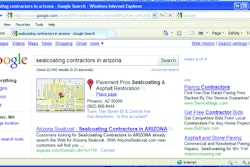New research by the Harvard Center for Risk Analysis (HCRA) at the School of Public Health estimates that the additional fine particulate matter emissions that can be traced back to traffic congestion in the nation's 83 largest urban areas lead to more than 2,200 premature deaths in the U.S. last year. The related public health cost, researchers say, was, conservatively, at least $18 billion.
The study, "The Public Health Costs of Traffic Congestion: A Health Risk Assessment," was published in the scientific journal "Environmental Health." It is the first to attempt to quantify the public health implications of growing traffic congestion in America.
"Our estimates of the total public health costs of traffic congestion in the U.S. are likely conservative," the study authors write. They point out their research considers "only the impacts in 83 urban areas and only the cost of related mortality and not the costs that could be associated with related morbidity, health care, insurance, accidents, and other factors."
As might be expected, the public health toll of traffic congestion was estimated to be highest in some of the nation's largest urban areas. The Los Angeles/Long Beach/Santa Ana, California, area was first, with an estimated additional 426 premature deaths and $3.3 billion in public health costs. It was followed by: New York City/Newark, New Jersey (+337 premature deaths, +$2.6 billion in costs); Chicago/Northern Indiana (+251 premature deaths, $2 billion costs); and San Francisco/Oakland, California (+124 premature deaths, +$1 billion in costs).
In conducting the study, the Harvard researchers projected the estimated growth of traffic congestion—and resulting emissions—from the baseline year 2000 through 2030 if no additional transportation infrastructure capacity is provided in the 83 urban areas to accommodate projected population growth.
They forecast traffic congestion will rise more than 30 percent over the period 2000 to 2030 in 18 urban areas: Raleigh, North Carolina (54 percent); Oxnard, California (47 percent); Las Vegas, Nevada (46 percent); Salt Lake City, Utah (45 percent); Sarasota/Bradenton, Florida (45 percent); San Antonio, Texas (42 percent); Orlando, Florida (41 percent); Laredo, Texas (38 percent); Richmond, Virginia (36 percent); Phoenix/Mesa, Arizona (33 percent); Pensacola, Florida (31 percent); Riverside/San Bernardino, California (31 percent); San Diego, California (31 percent); and Spokane, Washington (30 percent).
While the study was not designed to address traffic congestion-reducing strategies, researchers said solutions would likely vary from community to community. Potential strategies range from better traffic management through congestion pricing, traffic light synchronization and more efficient response to traffic incidents to adding new highway and public transit capacity. More refined models of traffic dynamics specific to each urban area linked to the public health models developed in the study could be used to explore the impacts of proposed strategies.
The research did offer one piece of good news. The number of additional premature deaths and public health costs due to traffic congestion has been declining over the past 10 years and will continue to decline until about 2030, when it would again begin to rise. The reason: an ever emissions cleaner fleet of U.S. motor vehicles as older, more polluting vehicles are replaced with today's low emission vehicles.
The public health cost of traffic congestion in 2000, the Harvard researchers estimated, was approximately 4,000 premature deaths with a monetized public health cost of approximately $31 billion. They forecast that the toll in 2030, absent remedial actions to significantly reduce traffic congestion in the U.S., will be 1,900 premature deaths and $17 billion in social costs.
The study was conducted by a team that included: Jonathan I. Levy, an associate professor at the Harvard School of Public Health at the time the work was completed and currently a professor of environmental health at Boston University's School of Public Health; Jonathan Buonocore, a doctoral student in the Environmental Science & Risk Management program at the Department of Environmental Health at the Harvard School of Public Health; and Katherine von Stackelberg, HCRA research manager and a principal at E. Risk Sciences, LLP. It was supported through a grant underwritten by the Transportation Construction Coalition (TCC), which includes 29 national associations and labor unions with an interest in federal transportation policy. The TCC is co-chaired by the American Road & Transportation Builders Association and the Associated General Contractors of America.
Founded in 1989, the Harvard Center for Risk Analysis is recognized as a world leader in applying decision theory, environmental and health science and economics to a broad range of important environmental and public health issues. HCRA is a research institute within the Harvard School of Public Health, which has the objective of using a variety of analytic methods to inform public policy decisions relevant to public health. HCRA's researchers enjoy successful collaborations across disciplines and a hallmark of our work is synthesizing and integrating basic environmental sciences with social sciences to better inform decision making.
The full report is available: www.transportationconstructioncoalition.org.



















